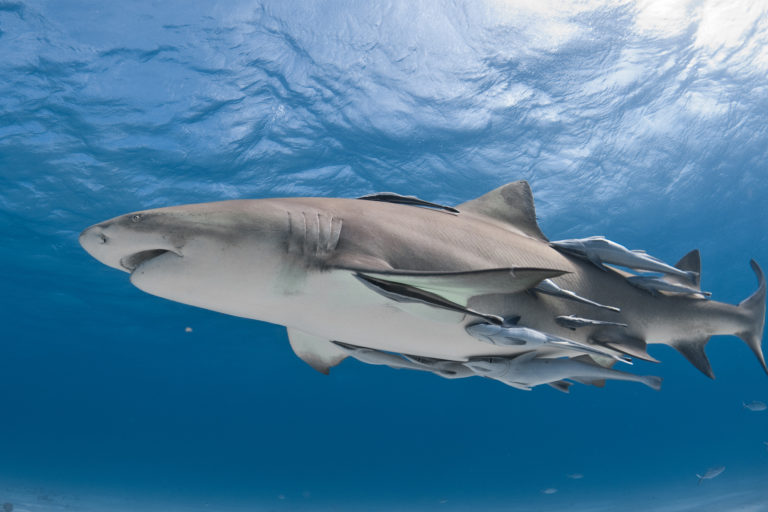Eating as much sushi as humanly possible seems an unlikely way to help save the planet. But one company is hoping fine diners from London to LA to Tokyo will devour enough uni sushi – sea urchin roe – to help restore the planet’s kelp forests.
From the North Sea to Tasmania, large parts of these underwater carbon stores – crucial for biodiversity – have vanished, leaving vast “urchin barrens” on the sea floor in their place. In Norway, the expanses of bizarre, prickly orbs are green. In California, they are purple. But wherever the urchins linger, the problems are the same.
Once the voracious echinoderms run out of kelp to eat, they do not simply die. Instead, they can stay in stasis for years, billions of them starving in their shells. This makes it impossible for the kelp forests to recover, unless the urchins are removed entirely.

Urchinomics has a plan for that. Their idea is to turn the hordes of urchins around the world into a business opportunity by collecting them, feeding them up on sustainably harvested, umami-rich kombu seaweed and selling the lucrative roe to high-end sushi restaurants.
“My first ‘a-ha’ moment was a year after the tsunami in eastern Japan,” says Urchinomics CEO Brian Tsuyoshi Takeda, remembering conversations with Japanese fishermen in the aftermath of the 2011 disaster.
“When the tsunami hit, it washed away all the predator species that used to be in the water. When the predators disappeared, the urchins exploded in population. The scientists told us it was about seven times the original biomass in a year or two. They literally ate all of the giant kelp forests which were the foundation of the north-east fisheries in Japan.”

According to Takeda, who is based in Norway but has operations in Japan, Canada and the US, Urchinomics has ambitions to make urchin removal and restoration self-sustaining around the world. Demand for uni, the Japanese name for urchins, is rising, and they were named one of the top food trends in 2018.
“The more you eat urchins, the better it is for the kelp forests. That’s kind of unique, I think … It has to be about looking towards these win-win situations where you’re creating some sort of economic incentive to help drive the restoration work.”
The company has just announced it has signed a lease to open its first urchin ranch in Norway, where 80 billion of the creatures are estimated to have ravaged kelp forests along the country’s coastline. Takeda hopes the site in Stavanger, the oil capital of Norway, will supply Michelin-starred sushi restaurants in in London, Amsterdam and Brussels this summer.
The ability of kelp forests to recover once urchins are removed is impressive, taking mere months. But the problem of urchin barrens is not restricted to Norway.

In northern California, the collapse of the once abundant bull kelp forests took just two years. Along large stretches of the 350km coastline from the north of San Francisco to the Oregon border, a combination of intense ocean heating fuelled by the climate crisis and armies of ravenous purple sea urchins laid waste to over 90% of the vast underwater carbon stores between 2014 and 2016.
The disintegration of these vital underwater ecosystems caught researchers by surprise, and left a trail of economic destruction. In 2018, a $44m (£33m) recreational red abalone fishery closed after the kelp deforestation triggered mass mortality in the sea snail.
“Our kelps are very productive ecosystems but they rely on the cool. We know that they are at risk in a warming ocean in a warming globe,” explains Dr Laura Rogers-Bennett from University of California, Davis, who recently published a study on how a sea-star wasting disease, a marine heatwave and sea urchin boom combined to collapse the bull kelp forests.

“Many parts of the world are experiencing kelp forest declines. Frequently they’re being replaced by huge populations of sea urchins,” she continues. “They’ve been seeing this in Japan, Norway; it’s happening in Australia in the southern state [of] Tasmania.”
In central California, the destructive armies of purple sea urchins have spread south to Monterey Bay, according to Jan Freiwald, head of the Reef Check Foundation, which has been training recreational divers to perform scientific surveys on ecosystems for over two decades. Yet the presence of sea otters might be helping the resilience of kelp forests.
“About half of the sites we monitor have lost the kelp, the other sites are remaining strong. More recently, some have recovered,” he says.
“One big difference between Monterey Bay and northern California is that we have sea otters. The sea otters are one of the keystone predators. They can keep the sea urchins in check. And so, actually in the kelp forests around Monterey, we see increases in sea urchins but also see the sea otters beginning to forage more on them. So that might sustain some reefs, rather than the northern coast where we don’t have sea otters.”

Previous research has found that where otters are present, kelp forests tend to store more carbon and are healthier. But simply introducing otters into urchin barrens would not work as the starving shells are of little calorific value to the mammals.
Whether or not Urchinomics manages to make it as a viable business, researchers warn that vast stretches of kelp forests along the Pacific coast are disappearing and the urchins must be cleared. Eating uni might be one way to save these precious marine ecosystems.
Find more age of extinction coverage here, and follow biodiversity reporters Phoebe Weston and Patrick Greenfield on Twitter for all the latest news and features


